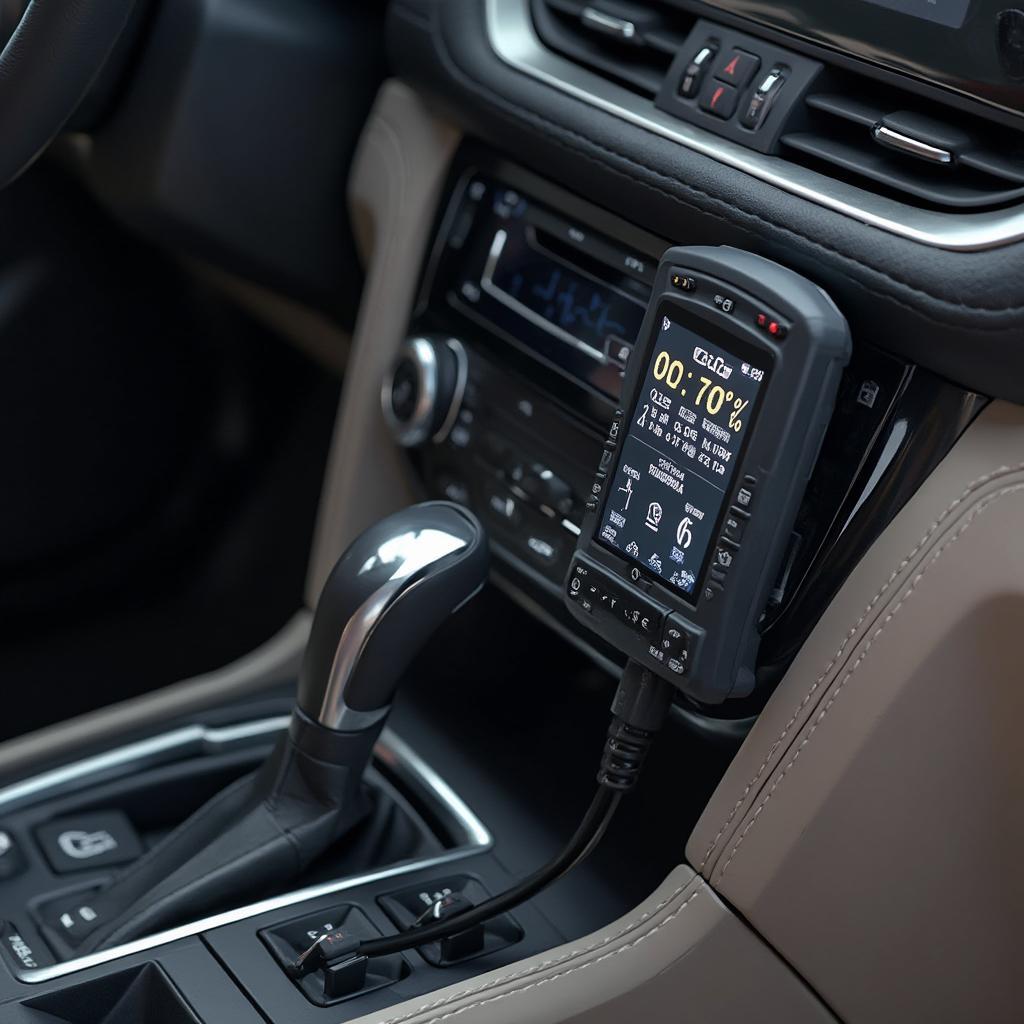Your cart is currently empty!

OBD1 P72 vs OBD2: Understanding the Differences
OBD1 P72 and OBD2 represent distinct generations of onboard diagnostics in vehicles. Understanding their differences is crucial for anyone working with car diagnostics. This article explores the key distinctions between these two systems, covering their functionalities, diagnostic capabilities, and implications for car owners and mechanics.
Decoding OBD1 P72
OBD1, or On-Board Diagnostics Generation One, refers to a range of early computerized diagnostic systems implemented in vehicles primarily before 1996. P72 specifically denotes a particular Engine Control Unit (ECU) often found in Honda vehicles of that era. OBD1 systems, including the P72, were manufacturer-specific, meaning each carmaker had its own unique connector, communication protocol, and diagnostic trouble codes (DTCs). Diagnosing issues with OBD1 P72 often involved checking for blinking engine lights or using specialized manufacturer-specific code readers.
 OBD1 P72 Connector
OBD1 P72 Connector
OBD1 systems like P72 primarily focused on monitoring emissions-related components and functionalities. Their diagnostic capabilities were limited compared to later systems, mainly offering basic fault code retrieval. This often required interpreting blinking check engine light patterns or using analog code readers.
Exploring the Evolution: OBD2
OBD2, or On-Board Diagnostics Generation Two, standardized vehicle diagnostics across all makes and models sold in the United States starting in 1996 (and later globally). It introduced a universal 16-pin connector, standardized communication protocols (e.g., CAN bus), and a common set of DTCs. This standardization simplified diagnostics, allowing generic OBD2 scanners to communicate with any OBD2-compliant vehicle.
 OBD2 Connector and Scanner
OBD2 Connector and Scanner
OBD2 significantly expanded diagnostic capabilities beyond emissions monitoring. It provides access to a broader range of data, including engine performance parameters, transmission data, ABS information, and more. This enables more comprehensive diagnostics and troubleshooting. Furthermore, OBD2 mandates specific monitoring criteria for various vehicle systems, ensuring consistent emissions control and diagnostic functionality across different vehicles.
Key Differences: OBD1 P72 vs. OBD2
The primary differences between OBD1 P72 and OBD2 lie in their standardization, diagnostic capabilities, and data access. OBD2 offers a universal standard, broader data access, and more advanced diagnostic capabilities compared to the manufacturer-specific OBD1 P72.
What are the main differences between OBD1 P72 and OBD2?
OBD1 P72 is manufacturer-specific, primarily used in older Honda vehicles, and has limited diagnostic capabilities. OBD2 is a universal standard, applies to most vehicles after 1996, and offers extensive diagnostic functionalities and data access.
Practical Implications
The shift from OBD1 systems like P72 to OBD2 has had significant implications for car owners and mechanics. is p72 ecu obd1 or obd2 For car owners, OBD2 simplifies diagnostics and repair, making it easier to understand and address vehicle issues. Mechanics benefit from standardized procedures and readily available generic scan tools.
Conclusion
OBD1 P72 and OBD2 represent different eras in vehicle diagnostics. While OBD1 P72 played a crucial role in the early days of onboard diagnostics, OBD2 has become the global standard, offering significant advantages in terms of standardization, diagnostic capabilities, and data access. Understanding these differences is vital for anyone involved in vehicle diagnostics and repair. Knowing which system your vehicle uses helps select the appropriate diagnostic tools and procedures for effective troubleshooting.
FAQ
- What does P72 stand for in OBD1? P72 refers to a specific Honda ECU commonly associated with OBD1 systems.
- Can I use an OBD2 scanner on an OBD1 P72 system? No, you typically need a manufacturer-specific scanner or adapter for OBD1 P72.
- Why is OBD2 better than OBD1? OBD2 offers standardization, more comprehensive diagnostics, and broader data access.
- When did OBD2 become mandatory? OBD2 became mandatory for all cars sold in the US starting in 1996.
- What is a DTC? A DTC (Diagnostic Trouble Code) is a code that indicates a specific malfunction in a vehicle system.
- What kind of information can I access with OBD2? OBD2 provides access to engine parameters, transmission data, ABS information, and more.
- Where can I find more information about OBD1 and OBD2 systems? is p72 ecu obd1 or obd2 provides further resources and information on these diagnostic systems.
Need support? Contact us via WhatsApp: +1(641)206-8880, Email: [email protected] or visit us at 789 Elm Street, San Francisco, CA 94102, USA. Our customer service team is available 24/7.

Leave a Reply